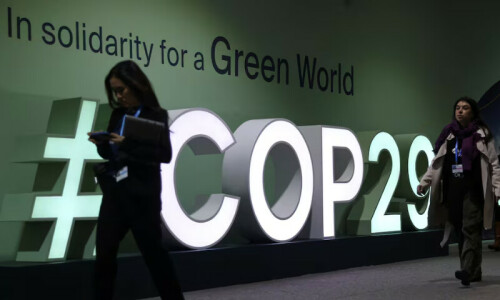SHINY new high-rises and sprawling gated communities are a superficial yardstick of ‘development’, and yet are often touted as a barometer of progress. Real development takes into account the well-being of people, which is an amalgam of several factors. One of them is the very key to life: water. On this score, Pakistan is falling appallingly short. The government on Monday made a shocking revelation in the National Assembly. According to the results of tests carried out by the Pakistan Council of Research in Water Resources on underground water in 29 cities, there are 20 cities where water collected from various sources was found to be more than 50pc unsafe for drinking. In three of these urban centres — Mirpurkhas, Shaheed Benazirabad and Gilgit — the underground water, as per PCRWR data, is 100pc unsafe. Following close behind are Multan (94pc), Karachi (92pc), Sargodha (83pc), Bahawalpur (76pc) and Muzaffarabad (70pc), to cite just the top eight in the list. The water was found to be contaminated mainly with arsenic, iron, fluoride and bacteria.
This is a dire situation, warnings about which have been coming thick and fast. Bacteria is a major factor in diseases of the intestinal tract — some of them potentially fatal especially for children and infants, among whom diarrhoea is the leading cause of mortality. Prolonged exposure to contaminants like arsenic in drinking water can lead to cancer and skin lesions; and is also associated with cardiovascular disease and diabetes. In utero and in early childhood, it may even have a negative impact on cognitive development. A report by the Pakistan Medical Association released at the end of last year stated that the poor quality of drinking water is responsible for nearly 30pc of diseases and 40pc of deaths in the country. As it is, an IMF report in 2018 ranked Pakistan as third on a list of countries facing acute water scarcity; according to it, our per capita water availability is 1,017 cubic metres, just a notch higher than the scarcity threshold of 1,000 cubic metres. A combination of factors has led us to this pass. These include population growth, urbanisation, climate change, poor water management such as outdated irrigation methods, indiscriminate dumping of industrial waste, untreated sewage contaminating water mains, and a lack of political will to put in place sustainable solutions. We are hurtling headlong into disaster. And unless drastic measures are not taken immediately, there will be no turning back.
Published in Dawn, August 11th, 2021










































